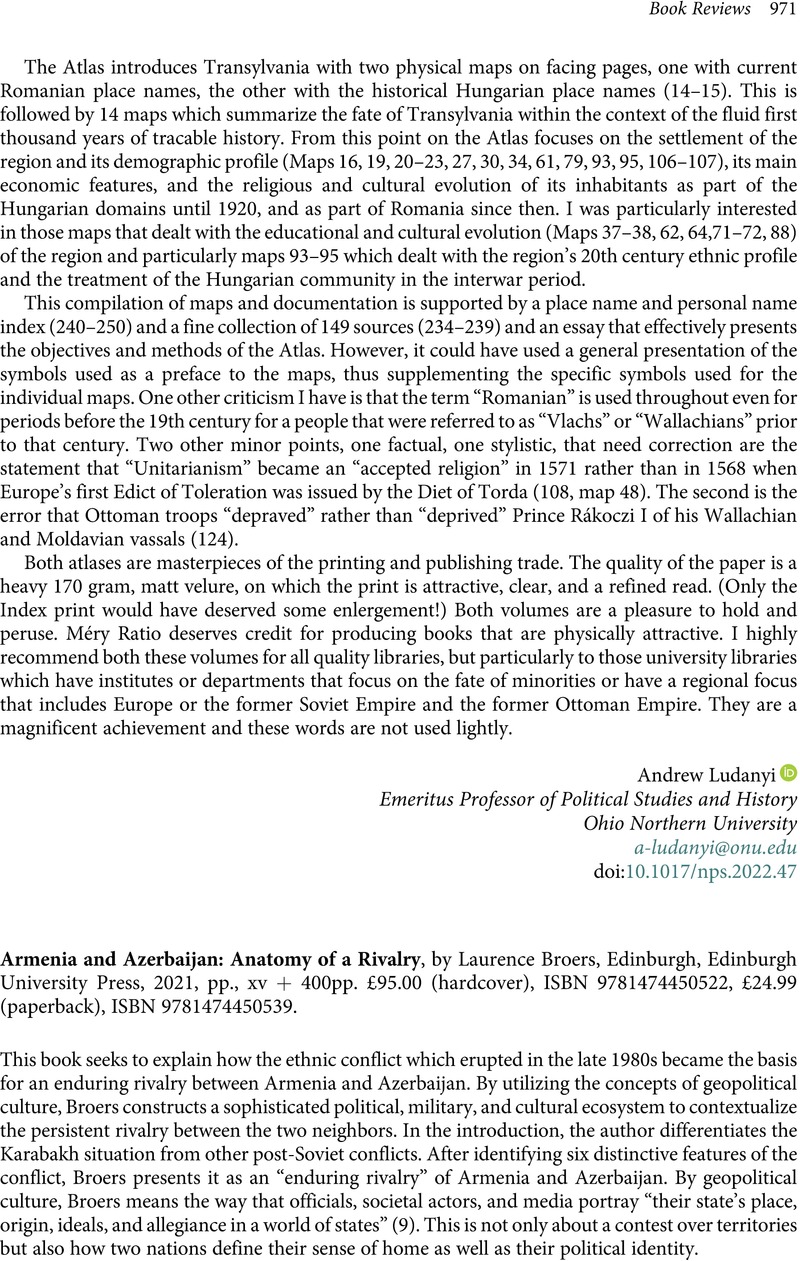No CrossRef data available.
Article contents
Armenia and Azerbaijan: Anatomy of a Rivalry, by Laurence Broers, Edinburgh, Edinburgh University Press, 2021, pp., xv + 400pp. £95.00 (hardcover), ISBN 9781474450522, £24.99 (paperback), ISBN 9781474450539.
Review products
Armenia and Azerbaijan: Anatomy of a Rivalry, by Laurence Broers, Edinburgh, Edinburgh University Press, 2021, pp., xv + 400pp. £95.00 (hardcover), ISBN 9781474450522, £24.99 (paperback), ISBN 9781474450539.
Published online by Cambridge University Press: 18 August 2022
Abstract
An abstract is not available for this content so a preview has been provided. Please use the Get access link above for information on how to access this content.

Information
- Type
- Book Review
- Information
- Nationalities Papers , Volume 51 , Issue 4: Special Issue on Mass Mobilization in Belarus , July 2023 , pp. 971 - 973
- Copyright
- © The Author(s), 2022. Published by Cambridge University Press on behalf of the Association for the Study of Nationalities

